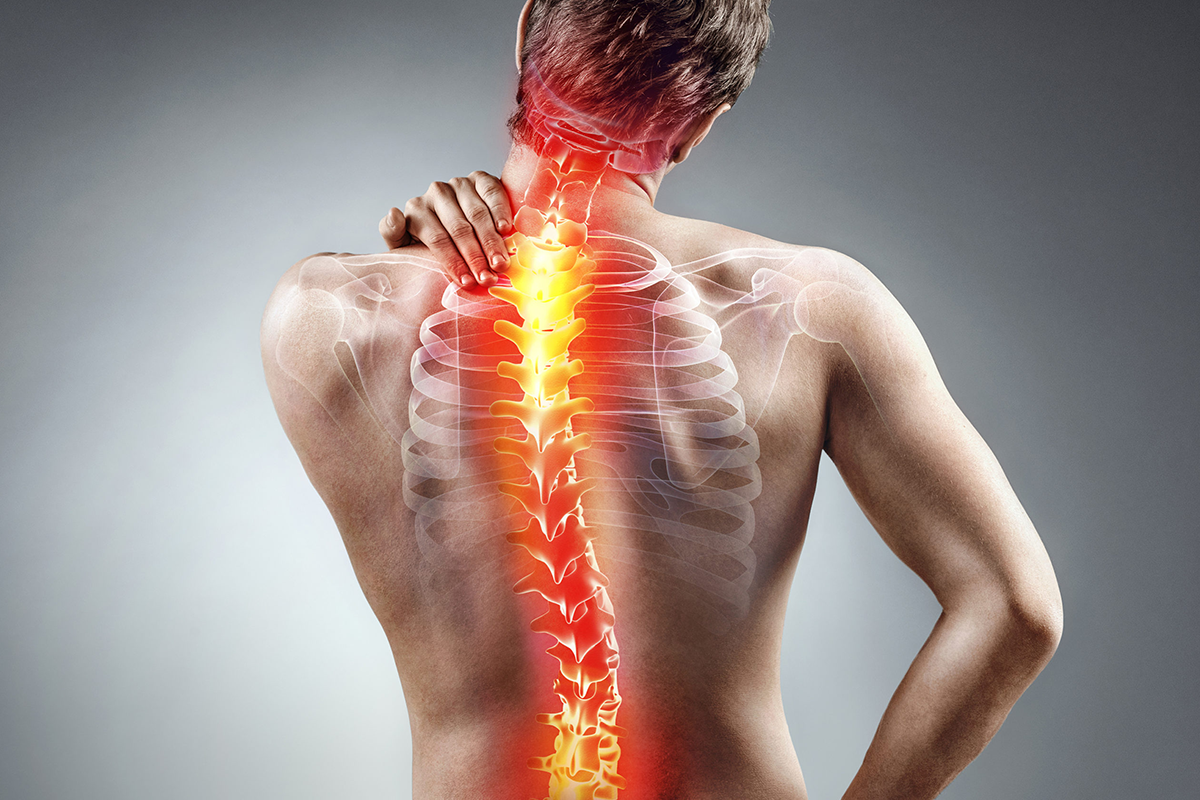Types of Spine Pain: Causes, Symptoms, and Relief Techniques
June 26 2023 – Nysh Website

Spine pain is a widespread issue that can impact individuals at any stage of their lives. Contributing factors such as poor posture, injuries, and degenerative conditions can lead to various types of spine pain. Understanding the distinct forms of spine pain and the available methods for alleviating it is crucial for achieving a pain-free life. In this comprehensive blog, we will delve into the different types of spine pain, their underlying causes, common symptoms, and effective techniques for spine pain relief.
Types of Spine Pain:
Muscle pain represents one of the most prevalent forms of spine pain. It can stem from spasms, sprains, injuries, overuse, poor posture, or strains. Muscle pain may manifest as acute or chronic discomfort, often accompanied by soreness or stiffness in the affected area.
Nerve pain occurs when the nerves in the spine become irritated or compressed. Degenerative conditions or spinal stenosis can contribute to this type of pain. Nerve pain typically presents as a burning or shooting sensation, tingling feelings, and numbness. Weakness in the affected area may also be experienced.
Joint pain arises from damage or inflammation in the spine's joints. Conditions such as degenerative disc diseases or arthritis can contribute to joint pain. This type of pain often leads to limited mobility, stiffness, tenderness, and swelling in the affected area.
Techniques for Spine Pain Relief:
Heat therapy is a widely recognized and effective method for relieving spine pain. By applying heat to the affected area, muscles relax, and blood flow increases. This therapy helps alleviate muscle spasms, reduce stiffness, and promote healing. Heating pads, hot packs, hot water bottles, hot tubs, or saunas can be utilized to provide heat therapy. It is particularly beneficial for muscle pain but can also provide relief for joint and nerve pain.
Nysh's BluHeat product line offers an innovative solution for targeted heat therapy. Their back pain patches are specifically designed to deliver heat to the affected area. These patches, made with natural ingredients and free from harmful chemicals, generate heat upon contact with the air. The increased blood flow and muscle relaxation they provide result in instant back pain relief. BluHeat back pain patches are safe for individuals of all ages and offer a convenient and effective option for back and spine pain relief.
Cold therapy, also known as cryotherapy, is an effective method for reducing inflammation and providing relief from spine pain. Applying cold to the affected area can numb the pain, reduce swelling, and alleviate joint and nerve pain. Cold compresses, ice packs, or cold baths can be used to apply cold therapy.
Stretching and exercise play a pivotal role in relieving spine pain and improving overall spine health. Proper stretching exercises can help reduce muscle tension and increase flexibility. It is important to perform stretching exercises correctly and avoid overexertion to prevent further injury. Regular exercise, including low-impact activities like yoga and swimming, strengthens the muscles supporting the spine, improves posture, and helps prevent future pain episodes.
Massage therapy is an effective complementary treatment for spine pain. Professional massage therapists can apply various techniques, such as deep tissue massage, to release tension in the muscles, improve circulation, and reduce pain. Massage therapy also promotes relaxation and can alleviate nerve and joint pain. It is essential to seek the services of a licensed and experienced massage therapist for optimal results.
Medications can provide temporary relief from spine pain. Over-the-counter non-steroidal anti-inflammatory drugs (NSAIDs) such as ibuprofen, celecoxib, or acetaminophen can help reduce inflammation and pain. Topical analgesics or pain-relieving creams can also be used to target specific areas. In cases of severe or chronic pain, prescription medications such as opioids or muscle relaxants may be recommended by a physician. However, it is important to use medications under the guidance of a healthcare professional and be aware of potential side effects associated with long-term use.
Chiropractic care is a non-invasive approach that focuses on diagnosing and treating spine and musculoskeletal conditions. Chiropractors perform spinal manipulations or adjustments to realign the spine, reduce pain, and improve function. These adjustments can help alleviate joint and muscle pain and promote overall spine health. Chiropractic care may also involve complementary therapies such as stretching exercises, massage, or lifestyle modifications to support long-term pain management.
Physical therapy is a highly effective approach to managing spine pain. A physical therapist can create a personalized treatment plan that includes exercises, stretches, and other modalities to alleviate pain, improve mobility, and strengthen the muscles supporting the spine. Physical therapy focuses on restoring function and promoting long-term spine health. The therapist may also provide education on proper body mechanics and posture to prevent future pain episodes.
Acupuncture is a therapeutic practice with roots in traditional Chinese medicine. During an acupuncture session, fine needles are carefully inserted into specific points on the body. This technique aims to stimulate the body's natural healing processes and enhance the flow of energy within. Acupuncture has been shown to be effective in relieving spine pain by reducing inflammation, promoting relaxation, and stimulating the release of endorphins, the body's natural pain-relieving chemicals. Many individuals find acupuncture to be a valuable adjunct therapy in managing their spine pain.
Mind-body techniques, such as meditation, mindfulness, and relaxation exercises, can be beneficial for managing spine pain. These techniques help reduce stress, promote relaxation, and improve overall well-being. By calming the mind and reducing mental and emotional stress, individuals may experience a reduction in their perception of pain and an improvement in their ability to cope with spine pain.
Summing Up
Spine pain can significantly impact an individual's quality of life, but there are numerous techniques available to alleviate it. By understanding the different types of spine pain and the relief methods outlined above, individuals can take proactive steps towards managing and reducing their pain. Consider the benefits of Nysh's BluHeat back pain patches, which provide targeted heat therapy using natural ingredients. Embrace these approaches today to embark on a journey towards a pain-free and healthy life.


0 comments